Continuing off the previous Flesh and Blood is a Fighting Game article, it's now time to delve more deeply into the extended FAB X Fighting Game analogy to tease out more insights. To do that, I decided to frame the next several articles by archetype.
As talked about both in my video on the Gorganian Tome YouTube channel - as well as the previous article in this series - the long-standing archetypes of Fighting Game Characters is such:
All-Rounder
Rushdown
Grappler
Zoner
These are the grand, umbrella archetypes with which the Fighting Game Community (FGC) views their Ludic pieces in any given fighting game. There are obvious branches growing from each of the core archetypes, but these original four cast the widest net.
For this article, we will focus on the Rushdown archetype, and how playing a Rushdown character in either FAB or Fighting Games can help inform you of your goals in the other. In other words, if you play a Rushdown in Street Fighter, you maybe want to try a Rushdown in Flesh and Blood, and vice versa.
The Rush
A Rushdown character does exactly what it says on the cover: they “rush you down.” That being, they rush toward you, rush you into a constant defensive state, and rush your life total down to 0 from 100.
Some of the most famous Rushdown characters in Fighting Game History are Cammy from Street Fighter, Chipp Zanuff from Guilty Gear, Yun from Street Fighter III: Third Strike, Yamcha from Dragon Ball FighterZ, Phoenix in Ultimate Marvel vs Capcom 3, Baraka from Mortal Kombat, and Bob from Tekken. (This list is in no way exhaustive, as Rushdown is by far the most represented character archetype in fighting games.)
Rushdowns tend to be extremely popular in fighting games, and often litter the competitive circuit. This is largely due to a few factors:
They tend to achieve the goal of the fighting game well.
They tend to have a lower execution barrier.
They can largely ignore their opponent’s offense, playing as close to solitaire as a Fighting Game can get.
How they work, and their deeper mechanics, are what we will focus on in regards to Flesh and Blood. But before we dive into Rushdown Characters in Fighting Games, I want to list out who I believe are the Rushdown characters of Flesh and Blood, so that we can keep them in mind as we look at the various options, gameplans, and tricks the Rushdown archetype has in fighting games.
Rushdowns in FAB, then, are as follows: Fai, Briar, Chane, Dash (Wombat), Katsu, Levia, Lexi (Fuseless), and Viserai.
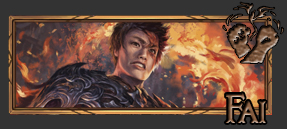
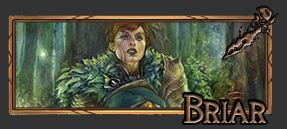
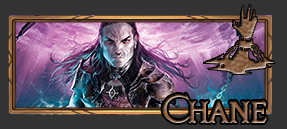
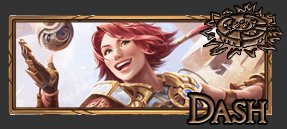
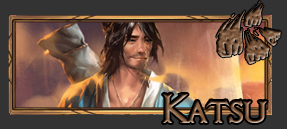
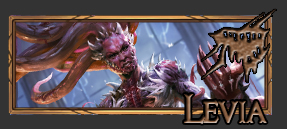
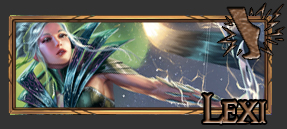
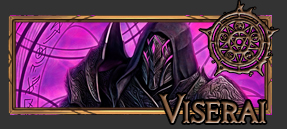
I did not include any Blitz heroes of this evaluation, simply because I have not played enough blitz to feel comfortable speaking definitively on the format.
Chipping Away
For our extended analogy, we will use Chipp Zanuff as our example. Chipp, from even a visual design perspective, looks aggressive. The way he stands with legs spread wide, and the blades on his arms facing toward him, requiring him to get in close to deal damage with the blades as opposed to a long rapier type weapon with which he can poke and prod. Chipp is the quintessential Rushdown character on steroids.
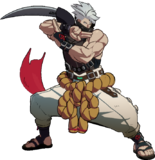
His attacks are lightning fast. While they don't do much damage individually, Chipp has some of the longest combo strings in all of Guilty Gear. He can take any stray hit in neutral and turn it into an extended combo leading either to a knockdown or significant corner carry (a special fighting game term meaning to juggle an opponent’s character to the corner of the stage) ending in an explosion of damage. But stray hits are not his only goal. Chipp has an abundance of options to trick his opponent into pressing the wrong button.

This attack is his forward heavy punch. It looks like an overhead attack, meaning it will hit the opponent if they are crouching. If the opponent stands up to block this overhead, it will force them to crouch, resulting in panic button mashing. If the opponent decides to jump, or is in the air when Chipp launches this attack, it will throw them to the ground and bounce their character up into the air so that Chipp can dump damage on the now helpless defender.

This attack is Chipp’s main crossup option. Think of a crossup like an attack which hits behind you in the air. Crossups are extremely useful in fighting games because they are innately difficult to block. The reason this is the case is because, normally, I will hold the button in the opposite direction of my opponent in order to block their attacks. If they jump over me and do an attack in the air on my other side, though, I have to switch directions in order to block the cross up. This takes situational awareness and reaction timing, and if Chipp lands this, guess what? You are put in the blender…again.

Okay, here’s a fun one. Jumping off the back of our Air Crossup in his tornado attack, the above image displays “Alpha Blade,” which is a special attack that, first, makes Chipp invisible, and also crosses the opponent up on the ground. That’s right, if you see Chipp turn invisible, you have to switch blocking directions just like you would his air attack. But that’s not even the worst part.
Chipp has several options when he goes invisible. He can cross you up, but can also:
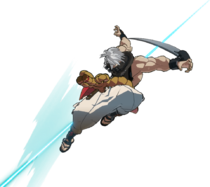
...go high...
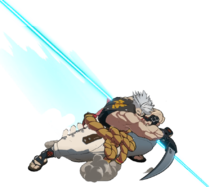
...or low...

...or send clones of himself...

...and even grab you from invisibility.
And each of these options requires a different defense!
Chipp lives and thrives in the chaos. He is moving around so quickly - constantly darting from one side to the other, turning invisible, landing a combo, dashing away, then running back up again - that your head is spinning just trying to keep track of this guy, let alone deal damage to him.
And damage you will do, if you happen to catch Chipp making a mistake. Chipp’s health pool is among the lowest in game. He is a terrible defender and can literally die on the spot if he gets hit in the wrong scenario.
This is the grand tradeoff of the Rushdown Archetype. If you want to do massive damage, every single turn you can steal from your opponent, you have to accept the innate risk of faltering in offense. When you do falter, it can spell disaster for you and the round.
So then, while it is great to land a sweet combo with Chipp and delete your opponent’s health total in one fell swoop, it is important to remember that plan is not guaranteed. So if the “kill them with a combo” plan is not guaranteed, what should I be doing as the Rushdown character?
This is where we get to make a big connection to Flesh and Blood.
Applying Pressure
In Flesh and Blood, it would be wonderful as Fai to be able to kill every opponent with the absurdly long Art of War + Mask of the Pouncing Lynx + Salt the Wound combo.
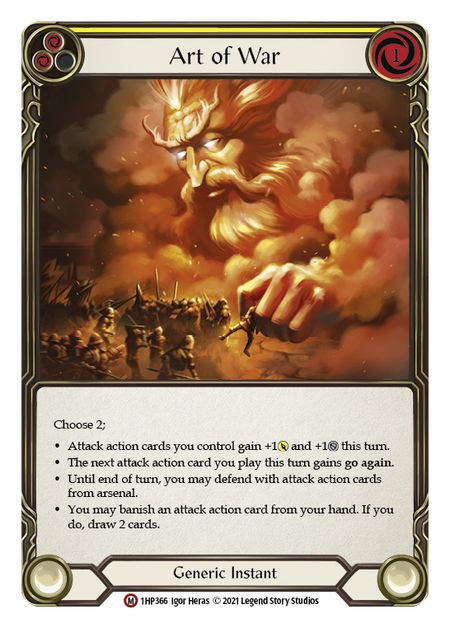
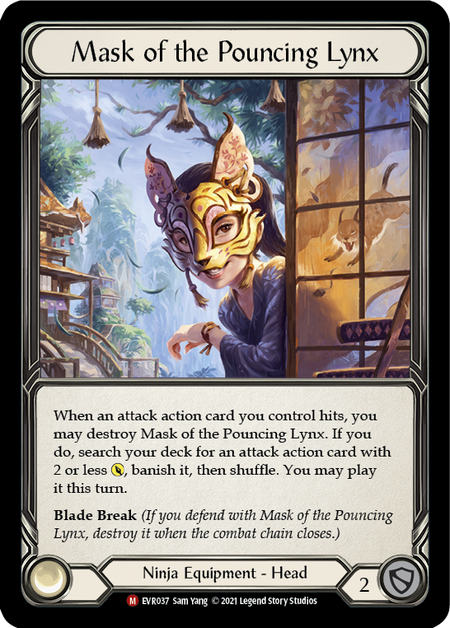

But given that blocking is a legal and encouraged maneuver in Flesh and Blood, that is not a guarantee. Instead, what Fai hopes to do is whittle the life total of their opponent down in the early game, dodge the really brutal on-hit effects like Red in the Ledger or Spinal Crush, then do the Art of War combo somewhere in the mid to late game. This allows Fai to begin trading his life total for pressure, opting instead for more safe and economic routes.
The classic plan of a Fai to close out a game, for example, is to attack for 4 on chain link 1, drawing out two defense cards; attack for 3 next, drawing one defensive card; another 3, drawing the last defensive card; then the weapon attack plus Phoenix Flame to finish the damage off. This is a very effective, easy combo string requiring very few resources or cards in hand. If Fai can begin this cycle with a high-enough health total, it will be nigh impossible for their opponent to reenter the game offensively, because they simply must commit every single card they have to defend Fai’s safest options.
In fighting games, we call this “jabbing them out” or “chipping them out”, where the Rushdown character deals a bunch of damage in the early game, using their best mix-up and crossup opportunities so that they can simply trade some of their life to land simultaneous hits with their opponent, as every single point of damage means death for the poor defender.
This, ultimately is where I box in Rushdown characters in Flesh and Blood. Rushdown characters have overrate attacks and tremendous potential to trick their opponent into the wrong form of block, which they then pivot to play efficiently to close them out.
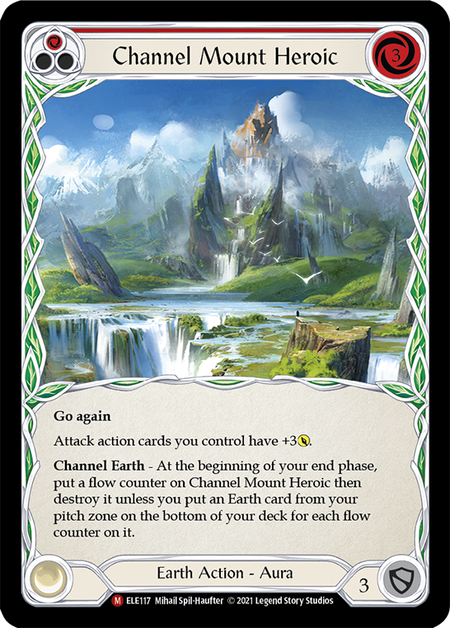
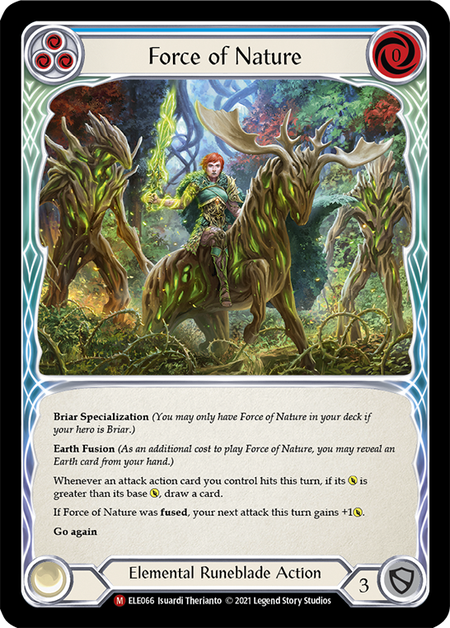
Take Briar, for example, who can outright kill any opponent with a Channel Mount Heroic and Force of Nature in play; or she can work them down to a low enough life total so that blocking with any two cards - so long as she keeps one attack, one non-attack, and enough resources to attack with Rosetta Thorn - all but guarantees she will chip those last few points of damage to end the game.
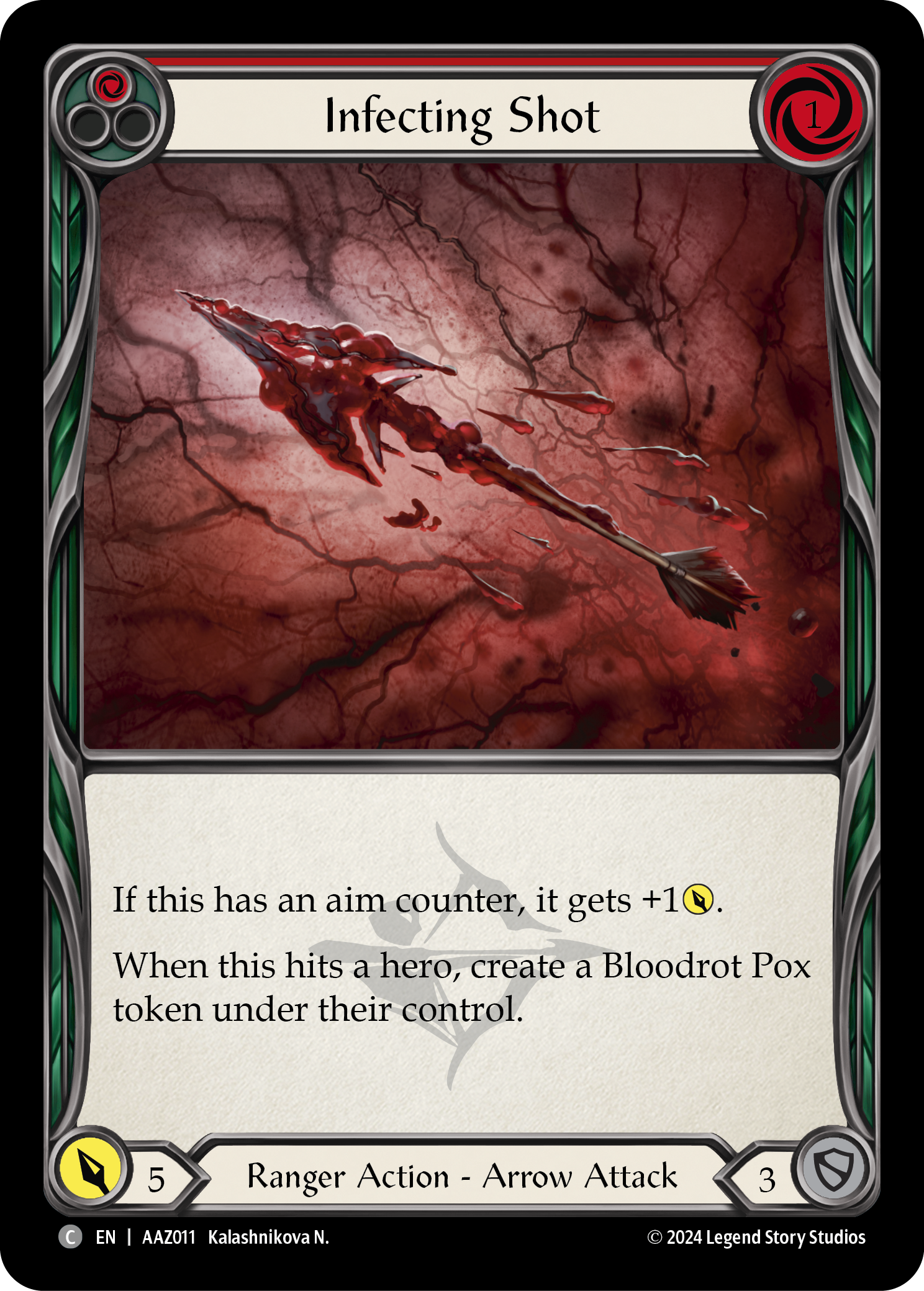
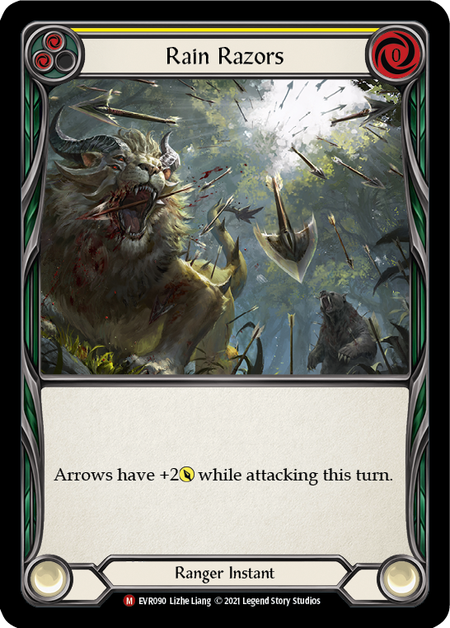
Or Lexi, who can present an Infecting Shot, requiring 2 cards minimum to prevent the damage, but can leverage the threat of a Rain Razors at any given moment. The opponent does not even get to play around Rain Razors either, as the Infectious Arrow is but one of three potential attacks Lexi can make in that one turn. Can we call that a crossup? Or is that just a normal mix-up?
Defending Against the Rush
If you play as a Rushdown in Flesh and Blood, or your best friend plays a Rushdown and you are trying to learn how to beat them, remember how you would counter them in a fighting game.
Keep them away from you.
Spacing is key. The Rushdown wants to be in your face, every single turn, forcing you to trade damage with them, because the non-rushdown character will lose the trade. What I mean by spacing in a card game is recognizing they will almost always win in a 1v1 race; so instead, use your more effective blocking cards to stop their mix-ups, then trade what little damage you have left on your turn, because Rushdowns can’t block very well.
Bait them
Rushdowns don’t really have time to think about your tech cards. If a Fai has an Art of War in arsenal, he will play that Art of War. He has to, because the opportunity cost is such that every turn the Art of War remains in arsenal is yet another missed opportunity for significant damage. If you use this to your advantage, you can start to bait them into bad plays.
An easy one, for example as Bravo, is to declare no blocks on the Fai’s Mounting Anger; announce a reaction, to which the Fai may announce his Ancestral Empowerment or Razor Reflex; at which point the defender can resolve Staunch Response and pay extra if needed. Most Rushdown damage is cheap and textless, and only a handful of cards and scenarios present real problems for the defender. Baiting a Fai into thinking you have one card, instead of another, can really devastate his ability to dump massive amounts of damage at you.
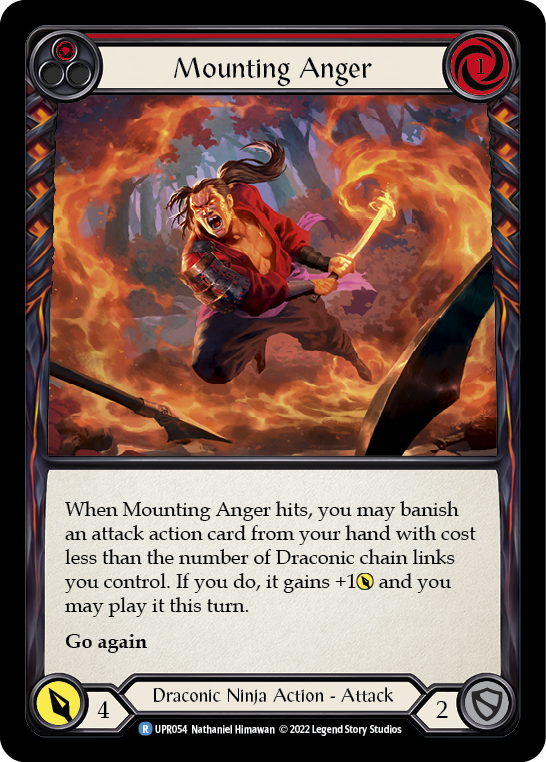
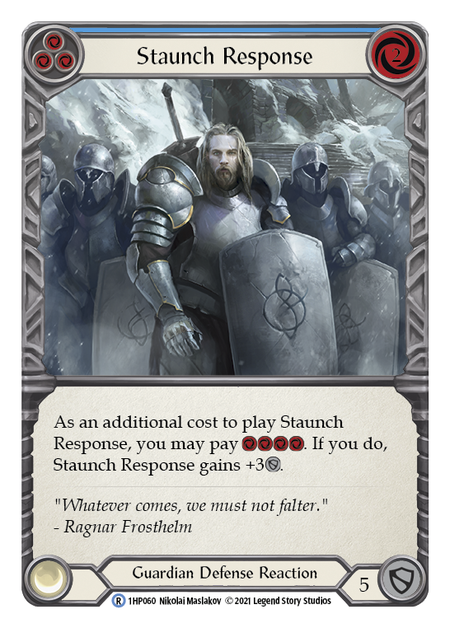
These two tenets work exactly the same between Flesh and Blood and any given fighting game. If you have more space between you and Chipp, the Chipp player has to more clearly announce his intentions with his movements. This allows the defender to study his plan and find the counter for it. Most of the time, it is putting out preemptive jabs to stuff his zany, invisible attacks.
Hopefully this article on Rushdown Characters brings some insight into the design and play patterns of their respective games, and that you can take this knowledge with you into either. I know it helped me when I realized the archetypical plan is identical across two completely different types of games as far as interface goes.
Stay tuned for the next article, where we’ll dive into the next archetype “All-Rounder.” Until then!




